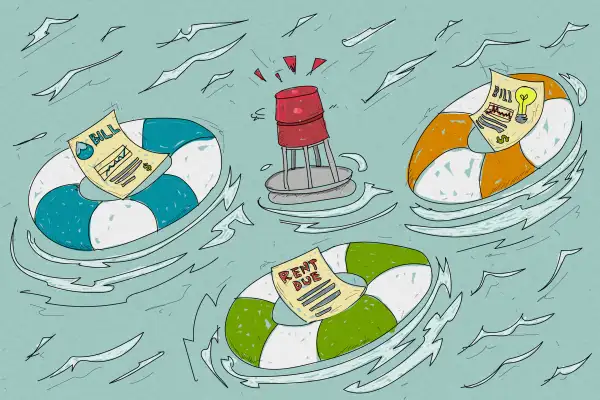What to Know About Emergency Rental Assistance Before the Eviction Moratorium Ends

UPDATE, Friday, August 27: On Thursday night the U.S. Supreme Court ruled that the Center for Disease Control and Prevention's most recent eviction moratorium lacked legal standing, striking the ban down and allowing property owners to begin eviction proceedings against renters who are behind on their payments due to the COVID-19 pandemic.
In an unsigned opinion, six judges wrote that the CDC had exceeded its authority when implementing the ban. The three liberal judges on the court dissented, warning of the potential for a wave of COVID infections as a result of a wave of evictions.
I anticipation of the move, the Biden Administration and the Department of the Treasury issued new guidelines designed to make the process for applying for Emergency Rental Assistance program funds easier.
ORIGINAL STORY: Nearly 6.4 million households in the United States were behind on rent as of the first week of July, according to The National Equity Atlas.
As of now, most of those households are able to stay in their homes due to a new eviction moratorium issued by the Centers for Disease Control and Prevention on August 3.
However, that ban is scheduled to expire as soon as October 3 and is already facing legal challenges. The U.S. Court of Appeals for the District of Columbia is set to rule on a challenge to the eviction moratorium brought by the Alabama and Georgia associations of realtors as early as today.
Regardless of what happens with the much talked about ban, renters who are unable to pay due to the pandemic, or landlords who are owed rent, can still apply for Emergency Rental Assistance (ERA). The Federal government has distributed $46.5 billion to state and local governments to provide financial assistance to tenants who owe back rent and utilities as part of the ERA program.
Who qualifies for rental assistance?
To qualify, you need to demonstrate that at least one member of your household is or should be receiving unemployment benefits, has lost income, has large unpaid expenses or has some other type of financial hardship due to the pandemic. At least one member of the household needs to be at risk of becoming homeless or not having a stable place to move to.
Income requirements vary by location, but in general, your current income needs to either be 80% or less of the Area Median Income or below the poverty level for where you live. Priority will be given to households with less than 50% AMI.
Money from the programs can be used to pay back rent and utilities on an apartment, house, mobile home or other place of residence that you lease. You don’t have to be behind on rent to apply for emergency rental assistance. ERA funds can also be used to cover future rent (as long as any back rent owed is paid).
Up to 18 months of rent can be provided, including back rent as far back as March 13, 2020, when the pandemic-related emergency was declared.
The assistance program has faced resistance on the part of some landlords who refuse to participate, citing reasons such as too much red tape involved or, as in the case of one Orlando resident, the assistance provided not covering the total amount of back rent due. Other landlords have been reported as refusing to participate in order to bring in new tenants at an increased price.
How to apply for Emergency Rental Assistance
The assistance is being administered by state and local governments but is funded by the Federal Government.
Each state and local government will have its own procedure for applying for aid and distributing the money. In some areas, the landlord will need to apply for assistance, using household information from the renter. In others, renters can apply for aid directly.
How quickly funds have been distributed has largely depended on how prepared the state was to administer the program.
Delays in the distribution of funds have been caused by the time it takes to set up the program, develop the systems required to administer the funds and acquire the necessary staff. The situation has improved though. In June, more than $1.5 billion in assistance was distributed to eligible households, more than during the previous three months combined, according to the U.S. Treasury Department.
One of the more efficient rental assistance programs has been the Houston-Harris County in Texas Emergency Rental Assistance Program. By collaborating with two local non-profit organizations dedicated to providing help to those in need, the program had distributed over $160 million in rent and utility assistance as of August 5.
By contrast, South Carolina didn’t implement its program until May of this year, with applications not being accepted until June. As of last week, only about $3 million in ERA funds has been distributed.
How to apply for rental assistance in every state
Money has put together a state-by-state list of sites to apply for ERA funds. We’re listing the state resources but be sure to look for local county government programs as well, as these may have different programs and requirements. You can find a complete list of county renter assistance programs on the U.S. Department of the Treasury website.
More from Money:
How to Apply for Emergency Renters Assistance in Every State
To Avoid Evictions, Biden Begs States to Use Emergency Funds
